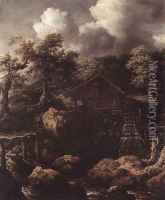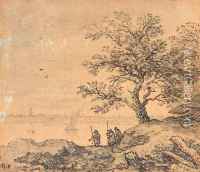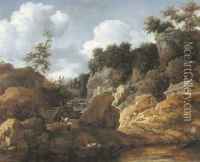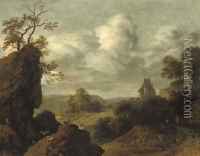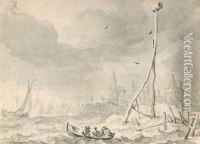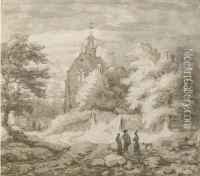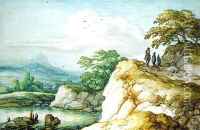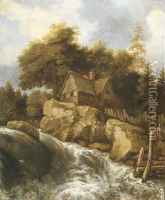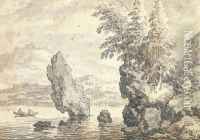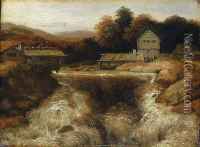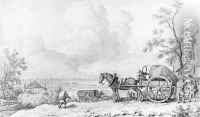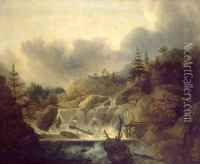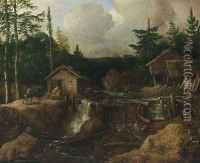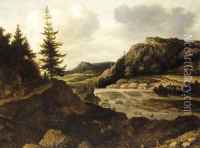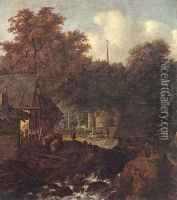Allaert van Everdingen Paintings
Allaert van Everdingen, born in Alkmaar in the Netherlands in 1621, was a Dutch Golden Age painter and printmaker specialized in landscapes. He was also known for his skillful etchings and was among the early European artists to depict Scandinavian landscapes, which he introduced to Dutch art after his travels to Norway and Sweden around 1644.
Everdingen received his initial training from Roelant Savery in Utrecht and later from Pieter de Molijn in Haarlem. His early work was influenced by these masters and also by the tonal landscapes of Jan van Goyen. Everdingen's own style began to emerge after his Scandinavian journey, characterized by rugged nature, dramatic rocky formations, and expansive views, which was quite different from the typically idyllic Dutch landscapes of the time.
He settled in Haarlem in 1645, where he became a member of the Haarlem Guild of St. Luke. Later in 1652, he moved to Amsterdam, where his Scandinavian-influenced landscapes garnered significant attention and became influential. He also produced a number of works depicting Dutch coastal scenes and riverscapes, which were also highly appreciated.
Everdingen was a versatile artist, and his oeuvre includes not only landscapes but also seascapes, genre scenes, and historical and allegorical paintings. His brother, Cesar van Everdingen, was also a painter, known for his classical and historical scenes. Allaert's work was important for the development of Dutch landscape painting, and his influence can be seen in the works of artists like Jacob van Ruisdael.
Allaert van Everdingen's landscapes with their Nordic sensibility contributed to the development of a more international perspective in Dutch art. He continued to work and live in Amsterdam until his death in 1675. Today, his works can be found in many major museums, attesting to his lasting impact on the Dutch Golden Age of painting.
